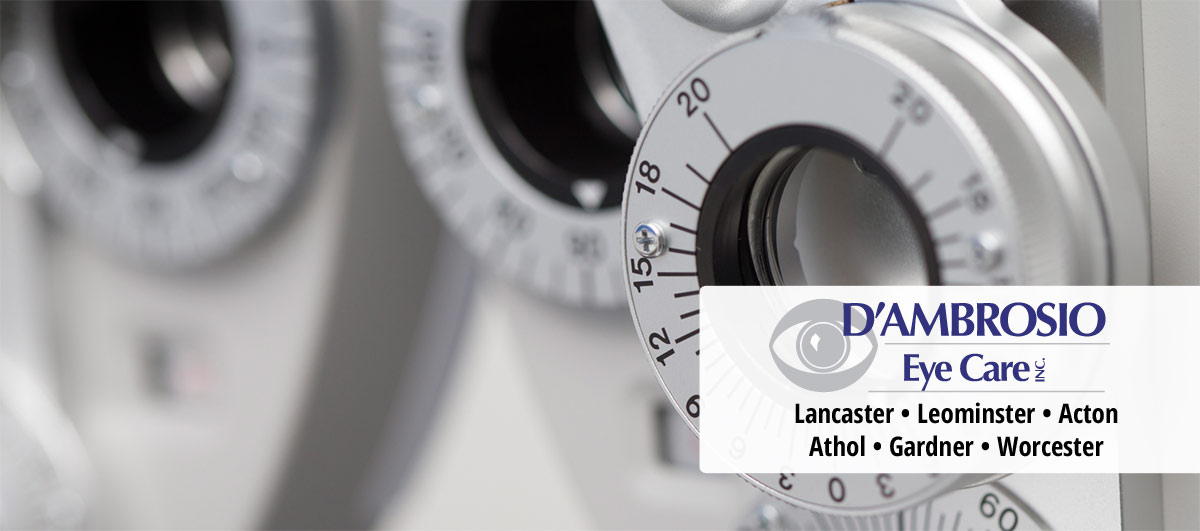As February is
designated Macular Degeneration Awareness Month, D’Ambrosio Eye Care
wanted to share important information about the Top 5 Risk Factors for Age Related Macular Degeneration (AMD). Age Related Macular Degeneration (AMD) is a
leading cause of severe vision loss among Americans ages 65 and over. Knowing
your risk factors, being aware of your family history, and scheduling regular
eye exam appointments with your eye doctor can help reduce your risks for
vision loss from macular degeneration. The key to preventing vision loss from
age related macular degeneration is early detection, diagnosis and treatment as
recommended by your eye doctor.
Know the Top AMD Risks
Know the Top AMD Risks
Ø Being over the
Age of 60
Ø Having a Family
History of AMD
Ø Cigarette Smoking
Ø Obesity
Ø Hypertension
If you have any two of these risk factors, you should
schedule an appointment for a comprehensive eye exam and evaluation.
Managing AMD Risk Factors
There are some AMD risk factors that a person can change such as smoking and diet to reduce the risk of vision loss from AMD, but other factors such as genetics are just a part of who you are. It is important, if possible, to know your family medical history regarding eye problems such as AMD. A sound way to reduce your AMD risk is to quit smoking or better yet, never start. For patients at high risk for developing late stage AMD, taking a dietary supplement of vitamin C, vitamin E and beta carotene, along with zinc, has been shown to lower the risk of AMD advancing to advanced stages by 25 percent. Eating green leafy vegetables and reducing alcohol consumption are also helpful in preventing AMD.
There are some AMD risk factors that a person can change such as smoking and diet to reduce the risk of vision loss from AMD, but other factors such as genetics are just a part of who you are. It is important, if possible, to know your family medical history regarding eye problems such as AMD. A sound way to reduce your AMD risk is to quit smoking or better yet, never start. For patients at high risk for developing late stage AMD, taking a dietary supplement of vitamin C, vitamin E and beta carotene, along with zinc, has been shown to lower the risk of AMD advancing to advanced stages by 25 percent. Eating green leafy vegetables and reducing alcohol consumption are also helpful in preventing AMD.
Know the Symptoms of Wet AMD
Wet AMD is the
type of macular degeneration most likely to cause rapid and serious vision
loss. Thus, people who are at risk should know the symptoms of Wet AMD as with
early detection, diagnosis and treatment it is possible to avoid or minimize
vision loss from Wet AMD.
Symptoms of Wet AMD can include sudden, noticeable loss or
distortion of vision, such as seeing “wavy” lines, “distortion”, “bending of
straight lines and objects”. If you experience any of these symptoms, please
call our office right away and explain your symptoms and request an immediate
appointment.
Current
treatments for Wet AMD such as injections of VEGF Inhibitors including
Lucentis® and Eylea® provide an excellent chance of stopping vision loss and
may actually restore some vision when macular degeneration develops. Earlier
diagnosis of wet AMD gives a much more favorable chance of successful
treatment.
If
you or someone you know has 2 or more of the top AMD risk factors, you are
encouraged to schedule an eye examination at D’Ambrosio Eye Care by calling us
at 800-325-3937, visiting D’Ambrosio
Eye Care or facebook.com/dambrosioeyecare so that we can help you manage
your risk of AMD.
D'Ambrosio Eye Care provides eye care for patients throughout greater Boston, central and
western Massachusetts with office locations at 479 Old Union Turnpike,
Lancaster, Massachusetts 01523, 100 Powder Mill Road, Acton, Massachusetts
01720, 413 Main Street, Athol, Massachusetts 01331 and 74 Main Street, Gardner,
Massachusetts 01440.

